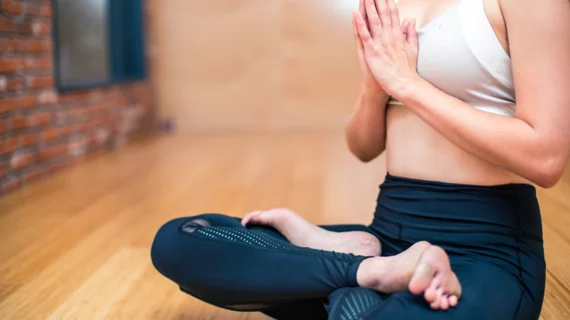Lululemon has no place in an MRI suite, doc warns
A board-certified neurosurgeon is warning patients to think twice about what they’re wearing when undergoing an MRI scan.
Betsy Grunch, MD, in Gainesville, Georgia, took to social media to deter patients from donning popular athleisure brand Lululemon to their MRI appointment.
“Don’t get me wrong, I love my Lulu, but there’s actually metal woven into the fabric,” Grunch explains.
Grunch goes on to share a photo that contains a list of materials contained in the fabric of Lululemon’s products (as well as similar products from other brands). She freezes the screen to highlight one component in particular—X-static nylon.
“X-static is pure silver that’s permanently bonded to the nylon,” she explains. “For athleisure wear such as Lululemon, it’s an antimicrobial, and it also helps with odor protection.”
While these may be great qualities for workout attire, metallic fibers have no place in an MRI suite, as there is a risk that they could heat up.
“If you wear it and you get into an MRI machine, it could potentially cause skin burns,” Grunch warns.
Although Lululemon was used as the example in Grunch's post, X-static is not exclusive to that brand. It is a common component included in many pieces of athletic clothing. It is especially prevalent in yoga pants, which may understandably seem like MRI-safe attire. However, if patients are not made to change into a gown or scrubs for their imaging, they could be at risk of sustaining burns.
Grunch shared a case report that included imaging of a woman who wore athletic wear into an MRI scan. The tag of her clothes stated that the fabric was “100% polyester.” Despite this, metal artifacts can be clearly seen in the images.
The woman noticed red streaks on her legs after her scan, which turned into blisters a week later. The lines on her legs matched up to the lines on the pants she was wearing during her scan.
“Metal during an MRI scan can heat up to 150 degrees, which can burn your skin. So, if you’re getting an MRI, just think about what you’re wearing before you get in the machine,” Grunch says.
Although there have been several serious accidents involving MRI scanners that have made headlines in recent years, burns are actually the most common injury during MR imaging. According to the FDA, between 2008 and 2017, burns accounted for 59% of MRI safety events.
However, these incidents are preventable. Appropriate use of MRI-safe padding, properly screening patients for the presence of metal and having patients change into gowns or scrubs prior to their exam are all standard safety precautions that could prevent burns when appropriately implemented.
Read more about MRI safety below.

